If Your Account-Based Marketing Strategy Isn’t Personalized, You’re Missing the Point
It’s no surprise that Account-Based Marketing (ABM) is the latest marketing trend to capture the interest and imagination of B2B marketers. Here’s how to examine the tactics of ABM in the context of your digital experience strategy.

Shana Rusonis
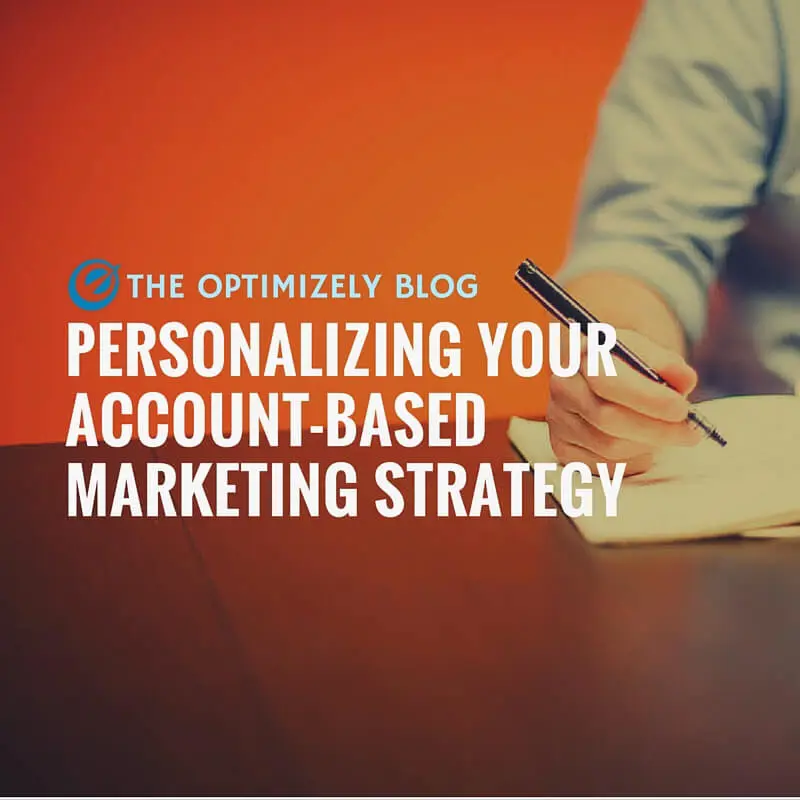
Pop quiz. Name a marketing strategy that:
- Focuses on your most valuable customers
- Successfully aligns marketing and sales
- Makes use of precious prospect and customer data
- Accomplishes all of the above
… to grow revenue and increase profits. If you answered Account-Based Marketing (ABM), you’re correct!
Based on the clear benefits, it’s no surprise that Account-Based Marketing (ABM) is the latest marketing trend to capture the interest and imagination of B2B marketers. At Optimizely, we’re excited to be a part of the ABM movement and fortunate to be partnering with Demandbase as part of the ABM Leadership Alliance to help B2B marketers navigate the fast-changing landscape of ABM technology.
According to SiriusDecisions, 92% of B2B companies recognize the value in ABM. But at the same time, only 20% of B2B marketing organizations have full programs in place to support the strategy.
Why the gap? Although ABM sounds like an ideal strategy in theory, putting ABM into practice requires significant effort. Adopting ABM requires seamless coordination of marketing and sales, as well as bolstering the marketing tech stack to support functions like account selection, targeted content, enhanced reporting, and personalization.
In this post, we’ll cover the nuts and bolts of ABM, explain what benefits you can expect, and show what the tactics of ABM look like in the context of your digital experience strategy.
What is ABM?
Account-Based Marketing is used by B2B marketers to identify and target the accounts they value most. ABM solutions typically include account-based data and technology to help companies attract, engage, convert and then measure progress against customers and prospects (source: Demandbase).
At a high level, ABM involves:
- Establishing a succinct list of target accounts, which marketing and sales define together
- Developing insights and generating contacts specific to those accounts
- Creating account-specific messages and content and delivering them through account-specific interactions and campaigns
What’s the Outcome of ABM?
The possible results of this laser-focused, account-based approach? A 26% increase in deal size and 75% increase in deal close rate (according to Demandbase). According to a recent ITSMA survey, 84% of marketers reported that ABM tactics had a higher ROI than other marketing programs.
To achieve this type of success, it’s essential to consider how your web experiences need to adapt to support an account-focused strategy. You can’t rely on generic experiences, content, and messages to propel your marketing to ABM success.
ABM Fundamentals: Personalizing Every Experience
Transforming a target account list into a digital experience strategy is a key transition in the ABM process. Once you have clearly identified the accounts you will pursue, you must apply creativity to envision what a personalized buyer’s journey looks like for the individuals who are a part of those accounts.
Your website, mobile presence, and channel programs (email, ads, events, etc.) should be planned in concert to generate interest and accelerate their buyer’s journey. That means thinking about modifying messaging, social proof, CTAs, and other elements to make sure you’re delivering the right experience to the right person at the right stage.
Transitioning to an account-based approach can feel like completely changing gears in your marketing strategy. Fortunately, creating digital experiences for ABM can be executed in stages, with varying levels of personalization, depending on the level of granularity that works for your business and the data you have available.
AdRoll: CTA Segmentation
Surfacing the right call-to-action (CTA) at the right time to the right visitor is an essential step in ABM. Rather than surfacing a single CTA to all of your visitors, you can effectively segment your audiences and show a more relevant next step to each visitor based on what you know about your audience segments or specific accounts.
AdRoll, an ad retargeting platform, accomplished this in a simple but powerful way with a couple of key website CTAs
First, they chose to personalize a bottom-of the page “Contact Us” CTA using demographic context: whether the visitor is an existing customer or not. This can be identified with a login cookie set on the visitor’s browser, or using a customer identifier from your CRM.
 |
 |
The experience on the left is for a non-customer while the experience for on the right is for a customer.
As you can see, by only surfacing the contact number to prospects, AdRoll can streamline the high volume of calls to their sales team, who are staffed to answer questions from prospective customers, and usually are different from troubleshooting questions from current customers. By directing current customers to a newly launched Support Center, AdRoll could surface scalable resources to help resolve product issues without taking up Sales staffers’ time.
A second example of CTA personalization to support key account segments is targeting experiences for AdRoll’s SMB and Enterprise product offerings. Based on behavioral signals, AdRoll segmented the navigation-level CTA to show “Request a Demo” to Enterprise visitors, and “Try It Out” to SMB visitors (and the rest of their web traffic).
 |
 |
Just like your business, AdRoll has a finite number of sales reps; showing a “Request Demo” CTA to all web traffic wouldn’t be the best use of their time, since not all visitors will be a fit for their enterprise offering. By segmenting their audiences this way, they can offer the more scalable “Try It Out” CTA as an option to non-enterprise visitors so they can still experience the product and start their journey with AdRoll.
Citrix: Industry-Based Personalization
Citrix took on a more ambitious web personalization project to demonstrate the impact of industry-specific experiences for a targeted marketing strategy. Think about how you can leverage your CRM data or a history of your visitors’ engagement (e.g., downloaded an industry-specific piece of content) to surface a more relevant experience based on their industry as part of your ABM strategy.
The Citrix team hypothesized that industry-specific content on the Citrix.com homepage would increase engagment and decrease overall bounce rate, because visitors would see content relevant to their individual business needs.Companies in the healthcare, education, and finance industries fit well into Citrix’s target audience, so they opted to target experiences to these three audiences.They created personalized banners on Citrix.com, with copy, imagery, and a CTA that was specific to each vertical.
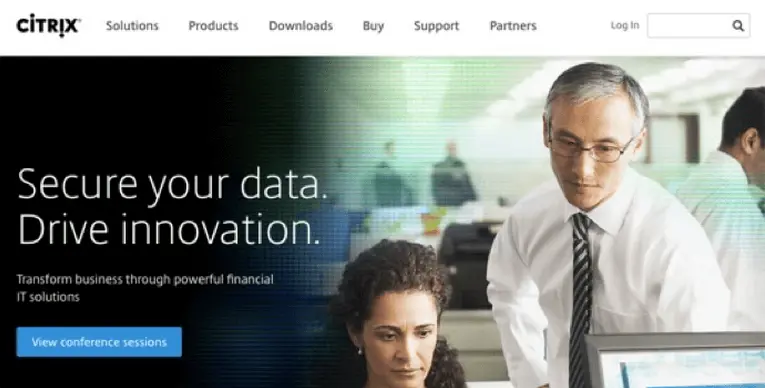
Citrix created this personalized homepage experience for visitors in the finance industry.

Citrix created this personalized homepage experience for visitors in the healthcare industry.
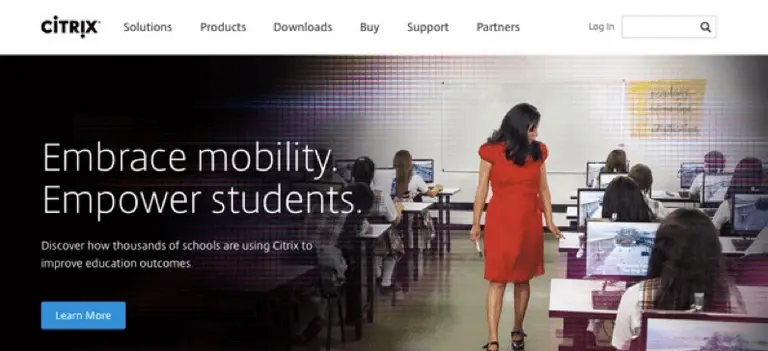
Citrix created this personalized homepage experience for visitors in the education industry.
The results were staggering. Overall, the personalized experiences accounted for huge improvements in visitor engagement across all three target industries:
- An overall decrease in bounce rate by 7%
- 30% increase in clicks on the homepage banners
- 10% increase in pageviews per session, indicating that visitors were navigating to more pages after they saw a more personalized homepage experience
- 4% increase in average session duration, indicating that not only were visitors seeing more pages, but they were also spending more time on the site and consuming more information
Optimizely: Account-Specific Homepage Experiences
Finally, leveraging a combination of demographic and behavioral data can provide a rich, highly tailored experience for members of a target account list. Optimizely’s shift towards an ABM strategy helps us focus on generating fewer leads of much higher quality within our target accounts and industries.
We recently redesigned our homepage to surface targeted campaigns at the account level—showing a highly personalized experience to all contacts at a particular company. The experience can be more individually personalized based on additional demographic or behavioral attributes, but the most visible change in the homepage experience is at the company level.In the experiences below, you can see how the homepage changes to reflect the brand of specific companies, like Microsoft and Adidas:
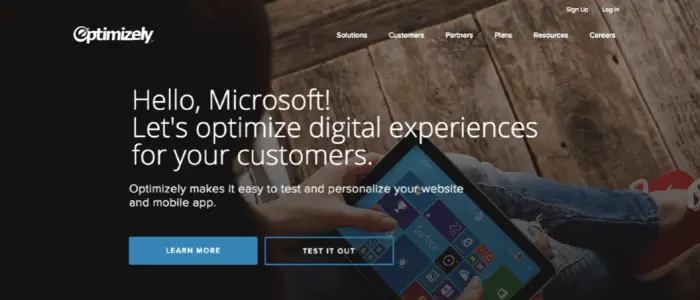
A personalized experience for employees of Microsoft.
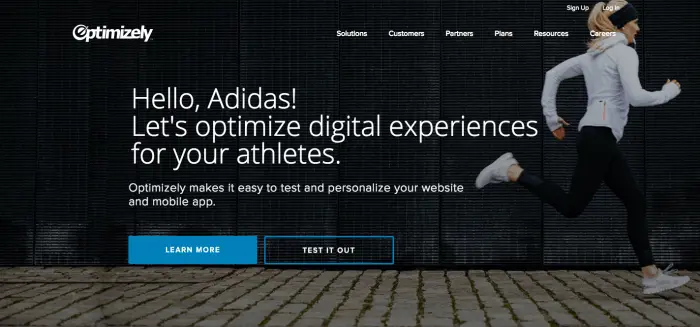
A personalized experience for employees of Adidas.
Many of these target account audiences we are able to execute on using the Dynamic Customer Profiles built into Optimizely Personalization with our own customer and prospect data, and we also partnered with Demandbase to further build out our data repository to serve these targeted experiences across our site.
Ultimately, serving these targeted experiences helps us to capture the interest of contacts at target accounts, surface relevant CTAs at the right stage of the buyer’s (or customer’s) journey, and to take action on signals we collect in our data from interactions with customers across all of our marketing channels and in our product.
It’s Your Turn: Learn More About ABM
Interested in learning more about account-based marketing and the technologies that support it? Check out the guide: Building an Account-Based Marketing Technology Stack from the ABM Leadership Alliance. Have any questions about the examples above? Leave them for us in the comments.
